Protections moto Forcefield Isolator 2
- EN
- FR
Cette fiche récapitule les informations que j’ai pu glaner sur le net sur les coques de protection Forcefield Isolator 2 de niveau 2.
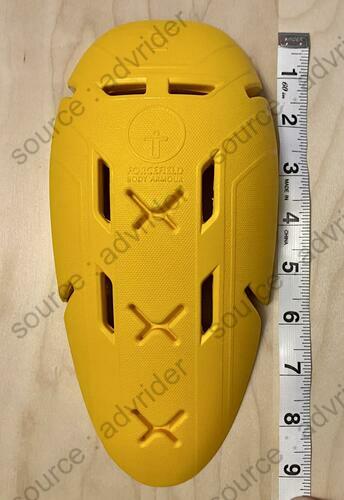
Synthèse : Protection très bonne (25% au dessus de la norme), aération correcte, tarif élevé.
Commercialisation :
4 modèles sont disponibles à la vente (environ 30e par paire) :
- Genou B
- Dimensions : 24 cm x 16.5 cm
- Poids : 114 g
- Hanche B
- Dimensions : 23 cm x 11.5 cm
- Poids : 80 g
- Coude B/genou B
- Dimensions : 24.5 cm x 16 cm
- Poids : 114 g
- Epaule B
- Dimensions : 20.5 cm x 15 cm
- Poids : 96 g
Trouvables un peu partout sur le net.
Caractéristiques des coques :
- Certification : Niveau 2 T+ T- 1
- Protection réelle : Le fabricant annonce un minimum de 10,6kN sur sa plaquette (voir plus bas), on peut imaginer une moyenne à +5kN, autours de 15-16 kN (norme : 20 kN en moyenne, maximum 30 kN)
- Fabrication : Royaume-Uni
- Longévité annoncée : 2 à 3 ans
- Type de matériaux : Visco-élastique souple (> D3O), s’ajuste avec la chaleur corporelle
- Aération: Bonne
Confort et comparaison avec les autres marques :
Rigides par temps froid.
Meilleure aération que les Knox Microlock, en revanche Knox l’emporte sur tous les autres plans : Couverture, ajustement et souplesse par temps froid.
Meilleur ajustement, souplesse et protection que le D3O.
Retours d’expérience : Temps froid
“pads do go very stiff in cold temperatures and take a while to soften” — advrider cblais19
Retours d’expérience : Comparaison avec les Knox Micro-lock L2, SAS-Tec et D3O :
The softest high protection (CE2) armor I’ve found is the Knox MicroLock. It’s more pliable then Forcefield, SasTec, or D3O; and has a softer feel when joint pressure is applied. — advrider cblais19
Retours d’expérience : Comparaison avec le D3O :
“Compared to D3O’s T5 EVO Pro X armor (which is also CE-certified as Level 2), the Forcefield Isolator 2 armor is signicantly more contouring, wrapping and compliant.” — mcgearhub.com
“And Brian Van also said: “Forcefield is better [than D30] for sure. D3O is a nice low profile armor that helps to reduce bulk and increase comfort. You will find the Forcefield to be thicker as compared to the D3O which I feel is necessary to provide a higher level of protection.” — advrider Valentino
Retours d’expérience : Comparaison avec les Knox Micro-lock L2 :
++ for Microlock. I’ve tried all the molecular/soft armors and the Knox is by far the most compliant at all temps. Forcefield Isolator is also good, but has a stiffer matrix at all times. I’ve got a bunch of Isolator CE2 pads that I’m actually replacing with Microlock due to the comfort difference. — advrider cblais19
Knox Microlock has much larger coverage for the elbow/knee armors (wash on the shoulders) - and a compound that is softer to the touch. Forcefield has larger vent holes […]. I also find that Forcefield takes longer to warm up in cool temps, and is extremely stiff until the - both are rated as temp stable however. — advrider cblais19
Photos :
Note : La plupart des photos viennent de la conversation advrider.com : CE2 Replacement Armor Database / Comparison ou de mcgearhub.com : FORCEFIELD ISOLATOR 2 ARMOR REVIEW (ALL PADS).
Fiches constructeur :
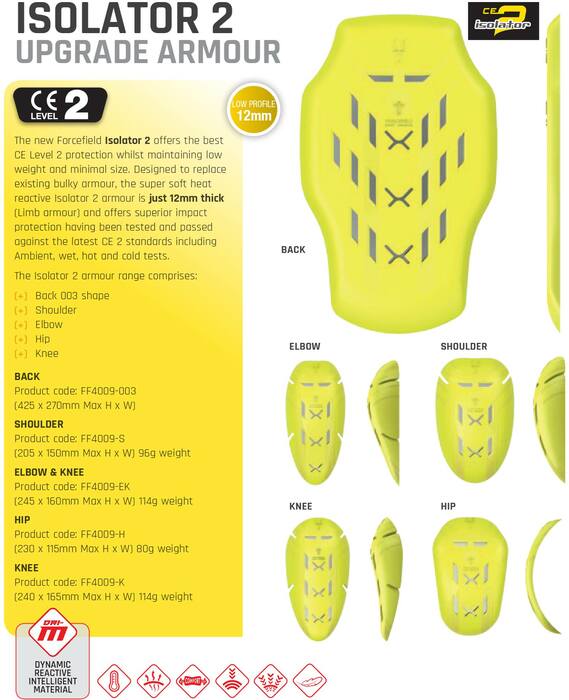
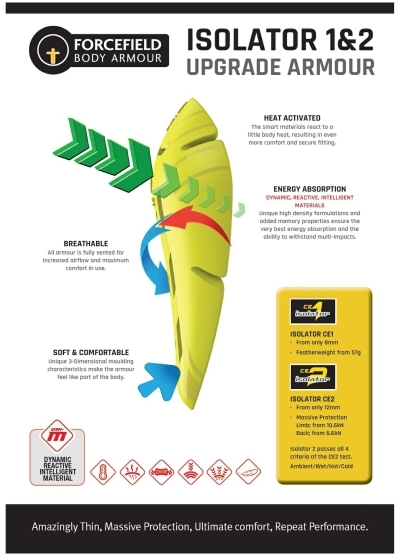
Photos générales :
Face, dos et notations (source : advrider) :


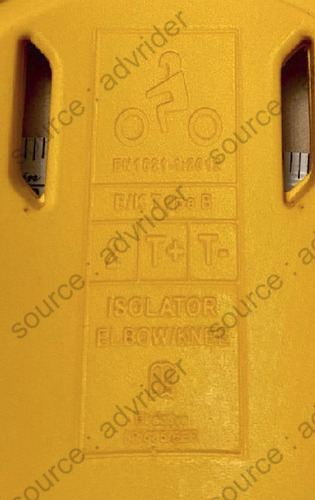
Comparaisons :
Alpinestar Bio Armor Air :
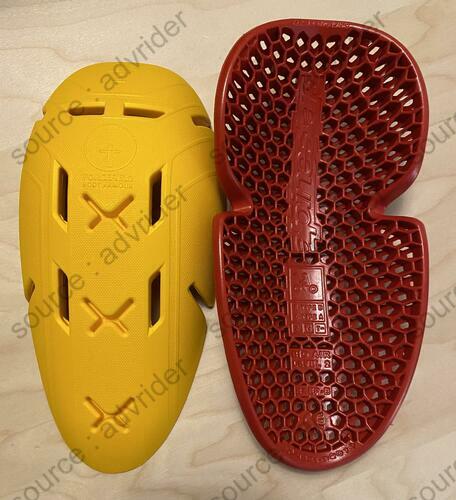
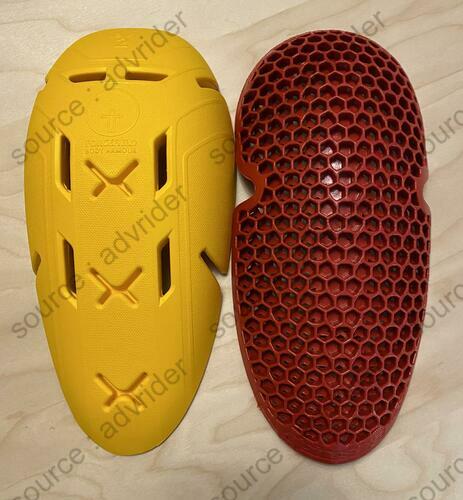
BMW NP2 :
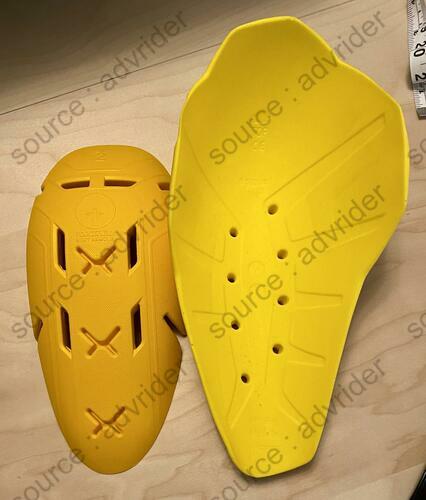
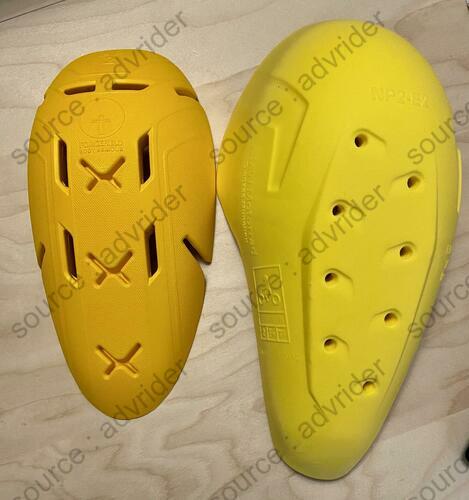
Rev’It Seeflex :
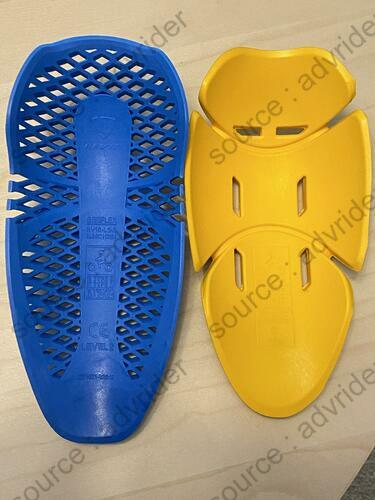
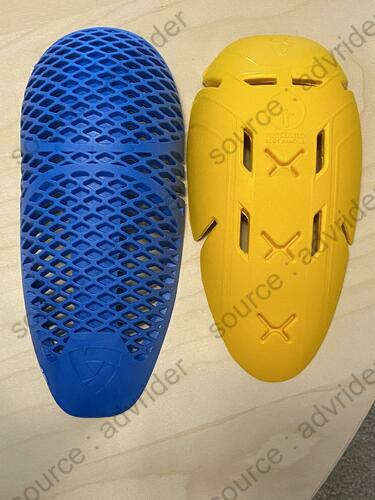
Knox Micro-lock :

Alpinesars Nucleon Flex Pro :
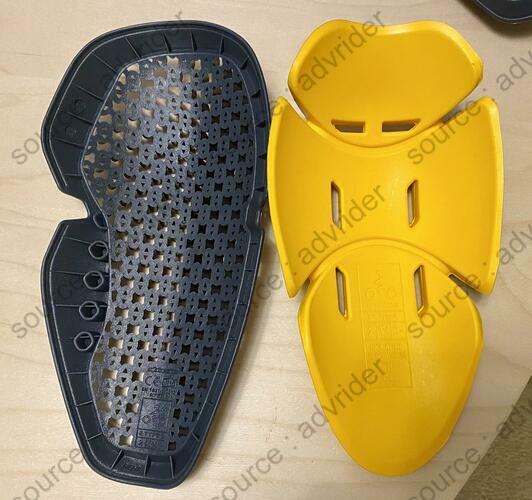
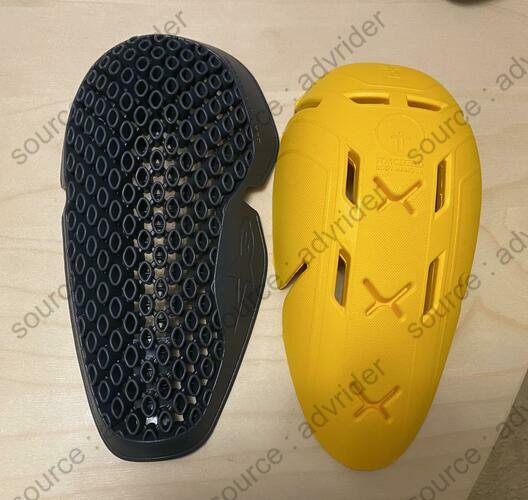
Lectures :
- mcgearhub.com : FORCEFIELD ISOLATOR 2 ARMOR REVIEW (ALL PADS)
- advrider.com : CE2 Replacement Armor Database / Comparison
Norme CE EN 1621-1 (protections épaules, hanches, membres) : Un poids de 5 kg est lâché avec une force de 50 joules sur la pièce, 9 fois.
Niveau 1 : Moyenne <35 kN. Aucun choc ne dépasse 50 kN.
Niveau 2 : Moyenne <20 kN. Aucun choc ne dépasse 30 kN.
T+ : La protection reste la même jusqu’à 40°C.
T- : La protection reste la même jusqu’à -10°C. ↩︎